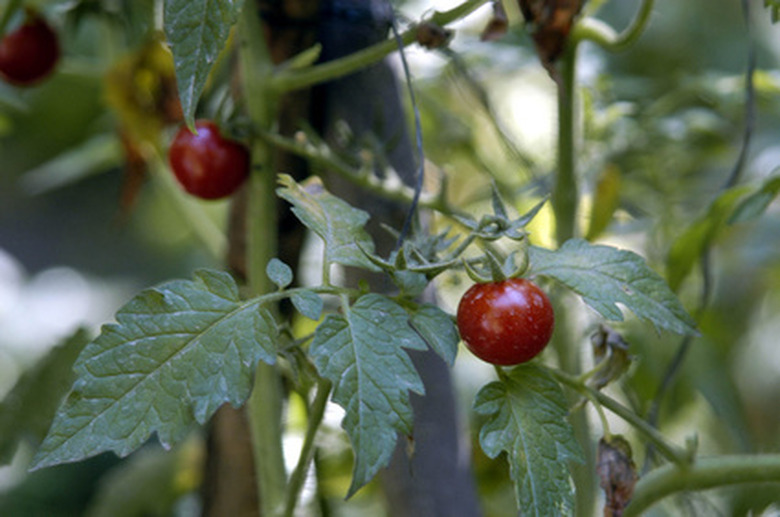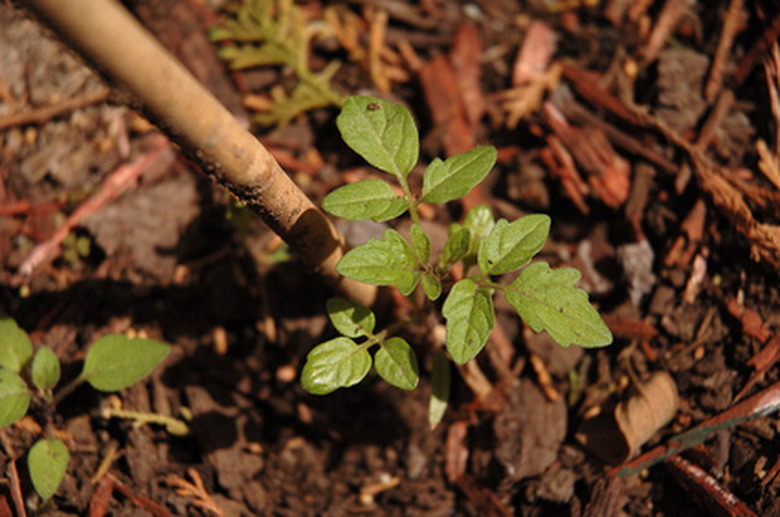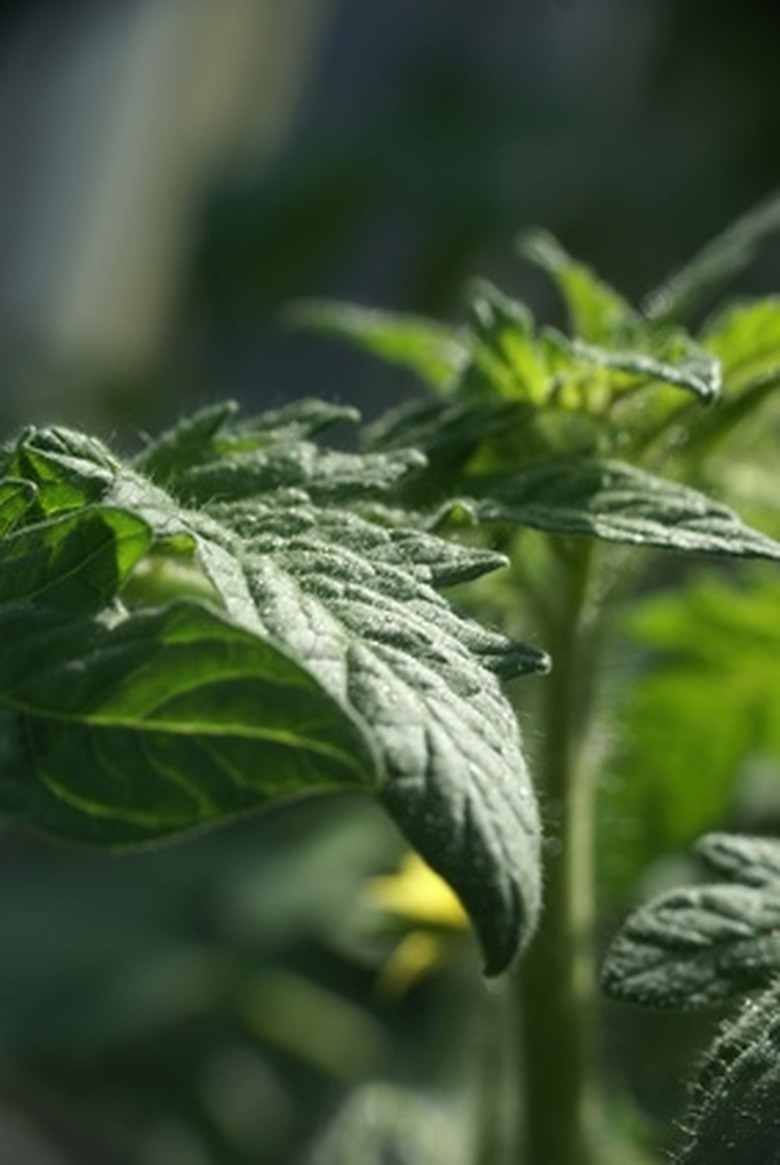How To Identify A Tomato Plant By The Leaves
Tomatoes are one of the most common plants in a garden. Plant identification may be a challenge when there is no distinct flower or young tomatoes emerging on the greenery. Tomato plants have similarities to some weeds and wild tomato plants. When pulling weeds from the garden or purchasing seedlings in a greenhouse, it is helpful to know how to identify the true tomato plant leaf. Emerging tomato seedlings have two oblong-rounded leaves that lie on either side of the first true leaf that sprouts days later.
Step 1
Observe the plant in question. A healthy, garden-ready seedling is a medium to deep green color.
- Tomatoes are one of the most common plants in a garden.
- Plant identification may be a challenge when there is no distinct flower or young tomatoes emerging on the greenery.
Step 2
Notice that the leaves on the tomato plant are 10 inches long on an average stem. Small leaflets are three inches long.
Step 3
Look at the leaves and notice the serrated, or wavy and pointed, edging along the entire leaf. Tomato leaves are compound with multiple leaflets growing along a common stem, called a rachis.
Step 4
Touch the leaf and feel a slight fuzziness, which is caused by the trichomes, or multi-cellular hairs, on the plant.
Step 5
Sniff your fingers after touching a tomato plant leaf. Tomato leaves have a pungent scent that lingers on the skin. A yellow substance, which produces the scent, is secreted from glandular trichomes. The strong scent is lingering and can be removed with soap and water.
- Notice that the leaves on the tomato plant are 10 inches long on an average stem.
- Touch the leaf and feel a slight fuzziness, which is caused by the trichomes, or multi-cellular hairs, on the plant.
Holes In New Tomato Plant Leaves?
Flea beetles are small, shiny, brown beetles with large rear legs, which are used to jump from tomato plant to tomato plant. As an adult the flea beetle often hides on the undersides of tomato plant leaves during the cooler winter months. Slugs can be voracious eaters, chewing irregularly shaped holes in young tomato plant leaves to the point of defoliating the entire plant. Since cutworms live in the soil, you can often find them and confirm they are indeed the culprits chewing your plant leaves by digging in the soil around your tomato plants during the day. While the Colorado potato beetle prefers potatoes as its host plant, it will feed on the leaves of tomato plants if they are available.
- Flea beetles are small, shiny, brown beetles with large rear legs, which are used to jump from tomato plant to tomato plant.
- Slugs can be voracious eaters, chewing irregularly shaped holes in young tomato plant leaves to the point of defoliating the entire plant.
Holes In New Tomato Plant Leaves?
Flea beetles are small, shiny, brown beetles with large rear legs, which are used to jump from tomato plant to tomato plant. As an adult the flea beetle often hides on the undersides of tomato plant leaves during the cooler winter months. Slugs can be voracious eaters, chewing irregularly shaped holes in young tomato plant leaves to the point of defoliating the entire plant. Since cutworms live in the soil, you can often find them and confirm they are indeed the culprits chewing your plant leaves by digging in the soil around your tomato plants during the day. While the Colorado potato beetle prefers potatoes as its host plant, it will feed on the leaves of tomato plants if they are available.
- Flea beetles are small, shiny, brown beetles with large rear legs, which are used to jump from tomato plant to tomato plant.
- Slugs can be voracious eaters, chewing irregularly shaped holes in young tomato plant leaves to the point of defoliating the entire plant.
Tip
Buy tomato seedlings that have no flower buds or blossoms. The energy of the plant will focus on establishing a healthy root system rather than fruit production when transplanted into the garden.


